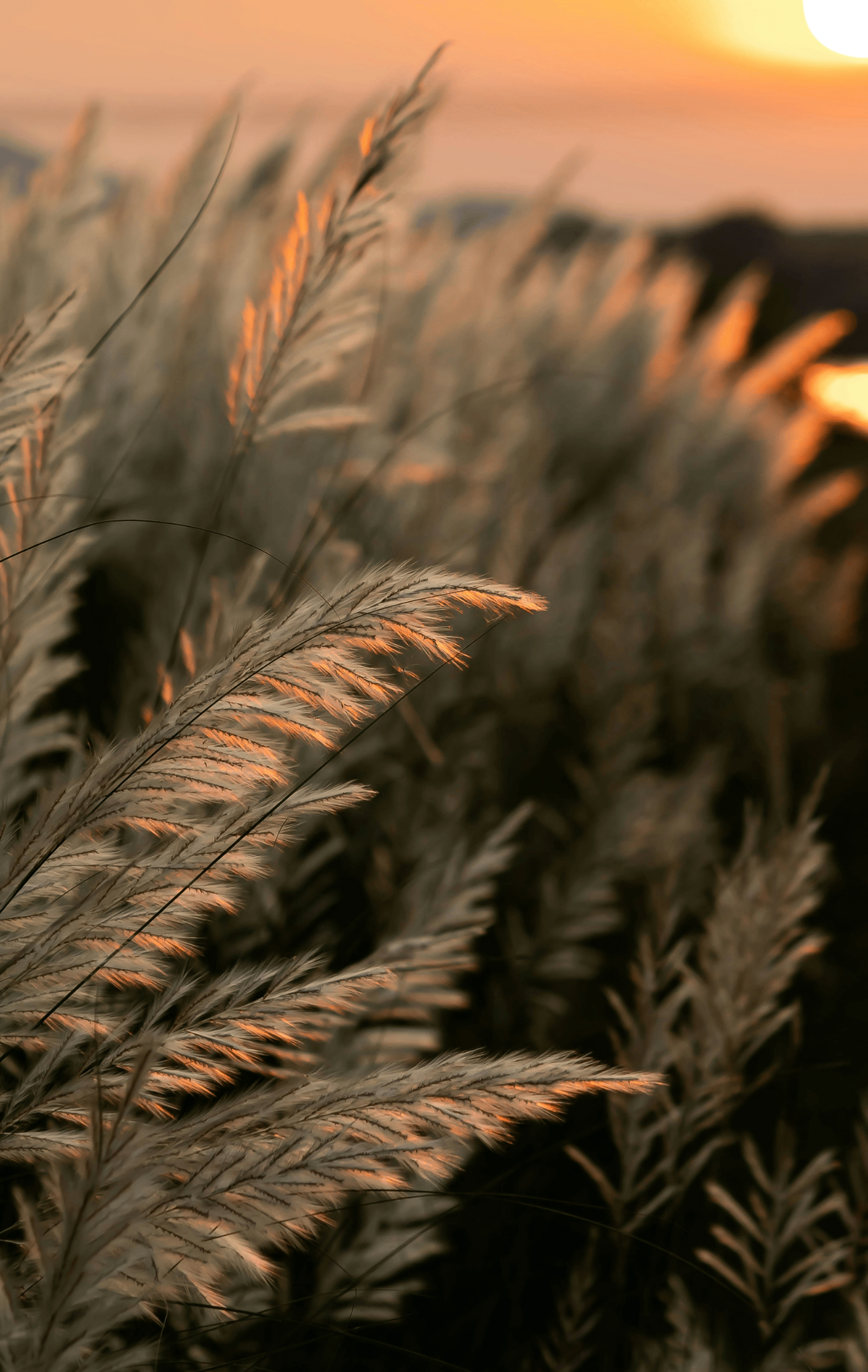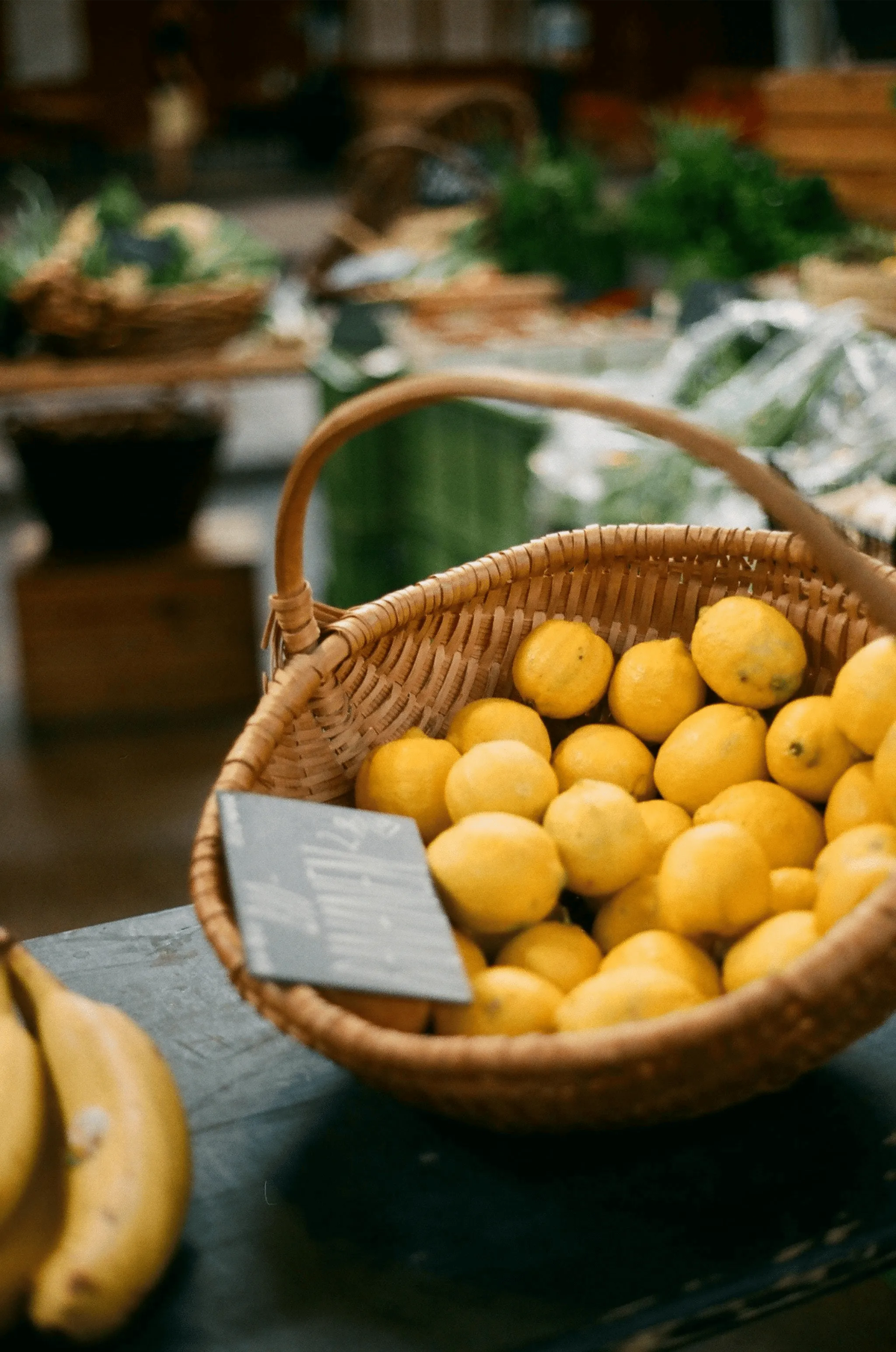Ancient Grains: Heirloom Seeds Nourishing Modern Tables
Last update November 3, 2025
Ancient grains unlock protein, resistant starch, and climate-smart farming for dishes that honour tradition while fueling modern health.
Ancient grains sit at the junction of archaeology, gastronomy, and climate-smart agriculture. Scholars trace their domestication to the Neolithic Revolution roughly 10,000 years ago. Yet, the food industry now courts these cereals and pseudocereals because they are highly nutritious, naturally gluten-free in many cases, and largely unchanged by modern breeding. By choosing ancient grains, cooks honour landscapes etched before iron ploughs and ingest proteins, vitamins, and minerals that modern wheat often lacks. Every steaming bowl of quinoa porridge or barley soup transfers resilient genetics, drought-proof farming practices, and cultural memory to a dinner table increasingly hungry for healthy foods that respect soil and society.
Terra Selene’s Nourish pillar views culinary choices through a larger sense of stewardship: each time ancient grains are eaten, biodiversity widens, smallholder incomes rise, and consumers absorb the health benefits of whole grains without the hidden costs of ultra-processed calories. This editorial explores ancient grains in depth, contrasting ancient and modern grains, surveying nutrition science, and mapping practical cooking tips, so readers can translate millennia of agronomic wisdom into everyday plates.
Table of Contents
Affiliate Disclosure
Some links in this post are affiliate links. That means we may earn a small commission, at no additional cost to you, if you choose to make a purchase. These are always brands, stays, or experiences we would recommend to a dear friend. Thank you for supporting the quiet sustainability of Terra Selene.
What Makes a Grain “Ancient”?
Researchers define ancient grains as species or cultivars that have remained largely unchanged in their genetic makeup since early domestication, typically thousands of years ago. An ancient grain is characterized by its historical origins, unique genetic traits, and notable nutritional benefits, with examples including rye, einkorn, and barley. These grains have remained largely unchanged over the last several hundred years, preserving their original qualities. Unlike modern wheat, which amalgamates three ancestral genomes, ancient grains such as einkorn, emmer, and barley maintain simpler chromosome sets that preserve original flavor compounds and micronutrient profiles. The term, therefore, describes both botanical lineage and minimal reliance on twentieth-century breeding programs that prioritized yield over nutrition. By retaining landrace characteristics, ancient grains carry phenolic acids, pigments, and protective proteins that help the seed and the eater alike thrive amid environmental stressors.
The archaeological record pushes grain origins back to the Neolithic Revolution around 10,000 years ago. Stone querns from the Levant still bear traces of wild einkorn, while carbonized sorghum has been unearthed in Sudanese hearths. Such findings confirm that ancient grains preceded industrial milling by millennia, embedding themselves not only in soils but also in ritual calendars, think of emmer bread offerings in early Egyptian tombs. This uninterrupted cultural stewardship helps explain today’s consumer gravitation toward seeds with provenance and integrity.
Contrasting ancient grains with modern wheat underscores breeding’s impact. Whereas einkorn carries fourteen chromosomes, bread wheat possesses forty-two. The chromosomal expansion delivered uniform loaves prized by industrial bakers, yet it often reduced mineral density and heightened gluten strength. In contrast to normal grains, which have been selectively bred for higher yields and specific functional properties, sometimes at the expense of diversity and nutrition, ancient grains remain closer to their wild relatives, with cell-wall structures that moderate starch digestion and support lower post-prandial glycemic responses. Appreciating this divergence equips cooks to select grains aligned with both health goals and culinary aspirations.
Nutritional Profile and Health Benefits
Across the spectrum, ancient grains provide macronutrients and micronutrients that substantiate their standing among healthy foods. They are an excellent source of protein, minerals, and dietary fibre, making them nutritional powerhouses. A cup of cooked quinoa delivers eight grams of plant-based protein, magnesium, iron, and manganese, while amaranth matches the protein content but adds lysine, an amino acid scarce in most cereals. Barley’s beta-glucan soluble fiber lowers LDL cholesterol in controlled trials, and millet supplies resistant starch that tempers blood-sugar spikes, especially when cooled after cooking. Collectively, ancient grains enrich diets with minerals, antioxidants, and vitamins often stripped from refined wheat.
Whole Grains Council data indicate that substituting two daily servings of modern wheat with spelt or emmer raises magnesium intake by thirty percent and supplies nine additional grams of dietary fibre. Because these grains are usually eaten in minimally processed form, their minerals remain bound within cell walls until cooking unlocks them, ensuring steady nutrient release, not the glucose surge induced by refined flour.
Ancient grains excel in nutrient bioavailability. Many contain phenolic acids and bound minerals locked within the aleurone layer; traditional techniques such as soaking and sourdough fermentation activate endogenous enzymes that liberate zinc and iron for absorption. Unlike white rice, which loses its bran and germ during polishing, intact sorghum kernels maintain carotenoids and tannins that act as free-radical scavengers. Diets high in ancient grains show improved glycemic markers, lower total cholesterol, and reduced inflammation among adults with metabolic syndrome.
Gluten content sparks frequent discussion. Although several ancient grains belong to the wheat family, notable examples, including amaranth, buckwheat, millet, sorghum, and quinoa, are naturally gluten-free. Even einkorn and spelt, which contain gluten, express simpler protein structures that some individuals report digesting more comfortably, though this is no substitute for medical advice in celiac disease. The key is informed selection and preparation: sprouting kodo millet before cooking, for instance, activates plant enzymes that pre-digest complex proteins and carbohydrates, reducing post-meal bloating common with modern wheat breads. Certain components of ancient grains, such as resistant starch, pass through the digestive tract without being broken down, providing nourishment for beneficial gut bacteria and supporting digestive health.
Spotlight on Eight Ancient Grains
Quinoa
Quinoa, cultivated on Andean slopes above 12,000 feet, escaped colonial wheat domination thanks to its ability to thrive in saline soils and intense ultraviolet light. Each seed houses complete protein, containing all nine essential amino acids, and high levels of the phenolic pigment betanin. When simmered until translucent, quinoa yields a fluffy texture reminiscent of couscous yet packs double the dietary fiber and a subtle grassy aroma. Its natural saponin coating, once discarded as bitter froth, is now recognized as a pest deterrent, allowing organic cultivation with minimal chemical input.
Amaranth
Amaranth earned the epithet “food of immortality” among Aztec priests, who molded its tiny seeds with honey during harvest festivals. Modern analysis clarifies the reverence: the grain carries roughly the same calcium density as dairy milk, significant vitamin B6, and peptides that exhibit anti-inflammatory properties in vitro. Popped in a hot pan, amaranth releases a nutty fragrance and forms the base of portable bars that bridge ancient grains and modern snack culture.
Millet
Millets are a family of small-seeded ancient cereals, including pearl, finger, and kodo varieties, known for their impressive nutritional value and important role in sustainable food systems. Millet remains a staple food across semiarid regions of Africa and India. Its drought tolerance stems from short maturation cycles and a fibrous root system that scavenges deep moisture. Millet porridge delivers manganese and magnesium, and when cooled, the starch retrogrades into resistant starch, beneficial for blood-sugar control. Light, slightly sweet notes make millet flour ideal for gluten-free muffins and whole-wheat bread blends that lighten the crumb while preserving nutrition.
Sorghum
Sorghum stands tall in both literal and nutritional stature. The cane-like stalk can surpass three meters, extracting atmospheric CO₂ efficiently through a C4 photosynthetic pathway. The kernel contains polyphenol antioxidants such as 3-deoxyanthocyanidins that confer deep burgundy hues in heritage varieties. Popped sorghum mimics popcorn, while milled sorghum flour lends body to pancakes and thickens soups without gluten. High fiber and resistant starch slow gastric emptying, making sorghum a balanced base for savory grain bowls.
Barley
Barley’s story is inseparable from beer, yet its culinary reach extends far beyond malt. Hulled barley contains beta-glucans that bind bile acids, thereby lowering total cholesterol and improving heart markers. Because the kernels retain their bran, they swell into chewy pearls that absorb broth flavors in soups and salads. The malty sweetness pairs well with roasted root vegetables and miso dressings, underscoring why ancient grains enrich both taste and texture.
Spelt
Spelt, a hulled wheat grown throughout Central Europe for centuries, fell out of industrial favor due to its tough glumes that resist mechanical threshing. Those husks, however, protect lipid-soluble vitamins and aromatic oils that give spelt bread a faint caramel note. Compared with modern wheat, spelt offers higher levels of protein, copper, and thiamine. Bakers prize its extensible dough for rustic pizzettas and crisp herbed flatbreads that showcase ancient grains’ tactile diversity.
Khorasan Wheat
Khorasan wheat, trademarked as Kamut in North America, traces its lineage to Fertile Crescent caravans. The elongated amber kernels bake into loaves with buttery sweetness and open crumb, attributes arising from naturally high selenium and fatty acids. Human studies indicate that substituting modern wheat with khorasan bread lowers blood-sugar levels and inflammatory markers. For pasta, kamut semolina imparts a golden hue without artificial dyes.
Wild Rice
Wild rice stands apart from other grains, both in its origins and its role as a staple food. Native to the lakes and rivers of North America, wild rice has long been a vital part of indigenous diets, valued for its earthy flavor and impressive nutritional profile. Naturally gluten-free, wild rice is rich in protein, dietary fiber, and antioxidants, making it a sought-after ingredient for those seeking healthy, wholesome foods. Its versatility shines in a range of dishes, from hearty soups and vibrant salads to elegant side dishes, where its chewy texture and nutty taste add depth and nutrition. Beyond its culinary appeal, wild rice holds deep cultural and spiritual significance for many indigenous communities, symbolizing a connection to land, tradition, and sustainable food practices. As more people seek out gluten-free and nutrient-dense grains, wild rice continues to earn its place on modern tables.
Comparison to Modern Grains
Modern grains like wheat, corn, and rice have been shaped by decades of selective breeding and hybridization, resulting in varieties that deliver high yields and uniformity for the global food industry. While these advances have helped feed billions, they have also narrowed genetic diversity and, in many cases, reduced the nutritional value of the grains themselves. In contrast, ancient grains such as einkorn, emmer, spelt, and khorasan wheat (often marketed as Kamut) have remained largely unchanged over thousands of years. These grains are often richer in protein, dietary fiber, and antioxidants than their modern counterparts, and they tend to be more resilient to pests and diseases. Many ancient grains are cultivated using organic or regenerative methods that support soil health and biodiversity, making them a more sustainable choice. For example, khorasan wheat and spelt are grown with minimal chemical inputs, preserving both the environment and the nutritional integrity of the grain. As consumers seek out more nutritious and environmentally friendly foods, ancient grains offer a compelling alternative to the highly processed, less diverse modern grains that dominate today’s diets.
Growing and Harvesting Heirloom Seeds
Cultivating heirloom seeds is a practice rooted in tradition and care, requiring a hands-on approach that differs significantly from the large-scale production of modern grains. Heirloom seeds, often used for growing ancient grains like millet and buckwheat, are more sensitive to their environment and thrive under traditional farming methods such as crop rotation, composting, and manual weeding. These practices not only help preserve the genetic diversity of grains but also result in food that is more nutritious and flavorful. Unlike modern grains, which are typically bred for uniformity and ease of mechanical harvesting, heirloom grains are often harvested by hand to protect the integrity of the seeds. This labor-intensive process allows farmers to select the best seeds for future planting, ensuring that the unique qualities of ancient grains are maintained. For those seeking healthy, sustainable food options, grains grown from heirloom seeds offer a direct connection to the land and a taste of agricultural heritage that modern grains simply cannot match.
Cooking With Ancient Grains
Mastery begins with hydration. Soaking hard grains such as khorasan, spelt, and barley overnight reduces cooking time and leaches phytates that inhibit mineral absorption. Sprouting buckwheat, or rinsing quinoa to remove saponins, activates endogenous enzymes that break complex carbohydrates into simpler sugars, lending mild sweetness. For bakers, a slow sourdough ferment with a starter fed on ancient grains prebakes digestibility into the crust while creating lactic tang that offsets their inherent nuttiness.
Texture control follows. Sorghum simmered in abundant water yields separate pearls ideal for salads, whereas barley cooked risotto-style in vegetable stock develops creamy cohesion. When converting recipes based on rice, use a two-to-one hydrated grain-to-liquid ratio and extend simmer time by twenty minutes to retain al dente chew. Spices that harmonize include cumin with millet, smoked paprika with quinoa, and rosemary with spelt, each amplifying terroir and inviting mindful eating.
Flavor layering draws on culinary anthropology. Ethiopian injera relies on fermented teff flour, yet a similar batter works with millet and amaranth for gluten-free crêpes. Pressing popped quinoa into cacao clusters creates nutrient-dense desserts free from refined flour. Readers exploring farm-to-table dining explained in our sister article, will see how choosing heritage cereals synchronizes kitchen practice and agricultural narrative, turning every meal into an edible archive.
Sustainability and Agricultural Resilience
Ancient grains bolster climate-smart agriculture by demanding fewer synthetic inputs than modern wheat, thereby reducing carbon footprints and conserving water. Sorghum and millet thrive in arid soils without irrigation, while einkorn’s compact genome confers natural disease resistance, reducing the need for pesticides compared to conventional agriculture. This resilience grants smallholder farmers a dependable harvest that supports food security when cash crops fail, illustrating how culinary choice can shape socioeconomic stability.
Crop rotation with ancient grains extends soil fertility. A barley cover crop suppresses weeds and scavenges residual nitrogen, while buckwheat’s rapid growth shields erosion-prone fields. Soil analysis for different characteristics, such as mineral and nutrient levels, organic matter, and microbial activity, supports the cultivation of ancient grains by optimizing soil health and crop productivity. Integrating multi-species heritage cereals fosters biodiversity, echoing principles championed in the slow food movement guide. Through conscious purchasing, consumers incentivize seed custodians who maintain genetic diversity in public commons rather than biotech vaults.
Processing practices matter too. Many ancient grains shed fewer nutrients during minimal polishing, so they reach the kitchen closer to their whole-grain form, slashing energy consumed in white-flour refinement. Packaging cooperatives now offer refill stations for quinoa and amaranth, cutting plastic waste and reinforcing circular economies. Such systemic benefits accrue silently whenever ancient grains replace polished rice in weekly menus.
Ancient Grains in Contemporary Food Culture
Chefs translate ancient grains into haute cuisine, folding puffed sorghum into chocolate ganache and constructing risottos from farro. Craft breweries revive emmer and einkorn malts to emulate Bronze Age ales, proving that ancient grains satisfy modern sensory expectations while narrating agricultural history. Cookbook authors document these experiments, showing that flavor innovation often germinates in the oldest seeds.
Artisan bakers are equally experimental, blending twenty percent khorasan wheat into baguettes to achieve a honey-colored crumb that appeals to diners seeking novelty and digestibility. Food media frames this evolution as authenticity rather than trend, underscoring a cultural appetite for stories of farmers, landscapes, and rituals that lie dormant within seed coats until water, heat, and human attention coax them to life.
At the retail level, packaged food products now advertise their inclusion of ancient grains, from breakfast cereals fortified with buckwheat and wild rice to snack bars bound with popped amaranth. Transparency matters: labels should specify cultivar origin, organic certification, and milling method, equipping shoppers to navigate marketing claims confidently. By reading ingredients critically, consumers turn purchasing power into a quiet referendum on agricultural ethics.
Buying and Storing Ancient Grains
Sourcing begins with understanding grain form. Whole berries, whether spelt or sorghum, store longer than pre-milled flour because intact bran and germ limit oxidation. Seek suppliers that ship within months of harvest and list the province of origin and year. Reputable online cooperatives and farmers’ markets display QR codes linking directly to field data, bridging soil and spoon.
At home, store ancient grains in airtight glass jars away from light to preserve fatty acids, especially in quinoa and amaranth. Freezing flour ground from kamut or barley arrests rancidity and extends shelf life up to six months. Before cooking, inspect kernels for off odors, a sign of lipid oxidation. For most varieties, a quick toast in a dry skillet before simmering unlocks aroma and shortens preparation time.
Ancient Grains and the Future of Food
Ancient grains prove that progress need not discard heritage. When quinoa replaces ordinary wheat in salads or millet thickens soups, flavor blossoms, and nutrient density rise. Farmers diversify fields, soils heal, and biodiversity gains a fighting chance. Home cooks, chefs, and conscious eaters thus participate in a larger sense of stewardship every time ancient grains simmer on the stove. In a world where modern wheat dominates acreage yet falters under climate volatility, these largely unchanged species model resilience: cultivated with wisdom, eaten with gratitude, and celebrated for making healthy, sustainable food delicious again.







